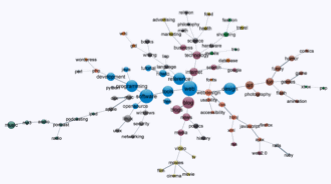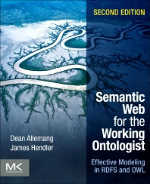Semantic Modeling in Depth
Duration 5 days
Brief Description
This course covers the concepts and practice of semantic modeling using W3C accepted standards including Resource Description Framework (RDF) and Web Ontology Language (OWL). It shows delegates how to apply these powerful concepts to understanding and modeling real world business data and problem domains. It provides skills which are essential in tackling the new breed of applications which will leverage semantics and Web 3.0 technologies.
What Differentiates this Course?
The leading edge and comprehensive coverage of semantic technologies and modeling concepts as they apply to business and Web 3.0 applications. Extensive case study which allows delegates to apply the concepts and discover the subtleties of modeling problems.
Intended Audience
Analysts, architects, modelers who intend working with semantic technologies and producing Web 3.0 applications. Information architects contemplating the introduction of semantic technologies and content architectures in their organisations.
Course Overview
The course will use concepts, practical case study examples, W3C standards and excellent texts to introduce the topics and provide hands on exposure to their use to delegates. Delegates will work in small groups and will model to produce solutions that could be used as the foundation for advanced application designs.
Semantic Technologies and Web 3.0
Semantic refers to the representation of meaning with symbols. Semantic ideas and modeling have been employed to make sense of concepts, their relationships and what they represent in the real world for many years. In 2001, Time Berners Lee, the founder of the original web introduced the concept of the Semantic Web, marrying concepts of universal access, worldwide data and semantic technologies to help make sense of it.
Since then, semantic technologies have evolved rapidly, culminating in a variety of powerful standards ratified by W3C and supported in an increasing array of commercial and open source products.
We believe the widespread adoption of semantic technologiges, open linked data and the semantic web will constitute a wave at least as significant as the original web and more so than the curently highly touted Web 2.0.
Typical Coverage
- Semantic Concepts
- Expressing Knowledge, Triples
- Identity, URIs
- Resource Description Framework (RDF)
- RDF Vocabulary Description / Schema (RDF-s)
- RDF Plus
- RDF Serialisation
- Inferencing
- Web Ontology Language (OWL) and its variants
- Triple Stores
- SPARQL Query Language
- Commonly Used Ontologies (e.g. SKOS, FOAF)
- Semantic Markup in Content (e.g. Mircroformats, RDFa)
- Using Open Linked Data
Certification
None
Provided Materials
Delegates will be provided with high quality notes and links to media and references to pursue further investigation. An electronic copy of the book: Semantic Web for the Working Ontologist by Dean Allemang and Jim Hendler will be provided.
Location, Costs and Dates
This course is offered in the UK, Germany and South Africa. It may be extended to other locations in future. Please see schedule for dates, locations and price in local currency.


